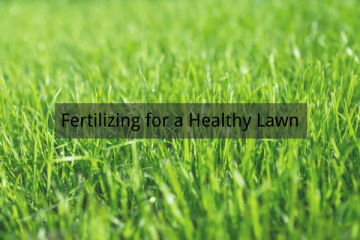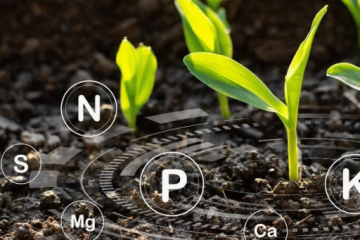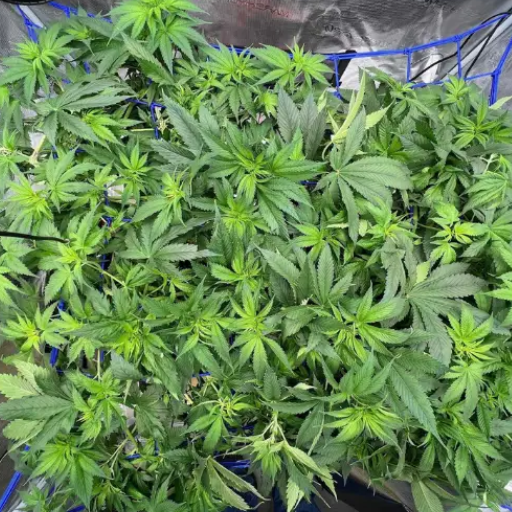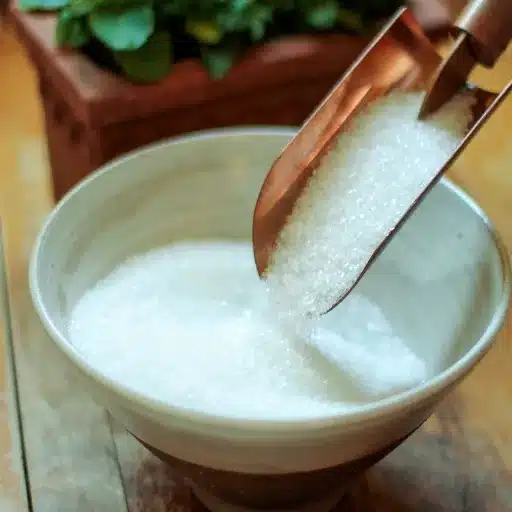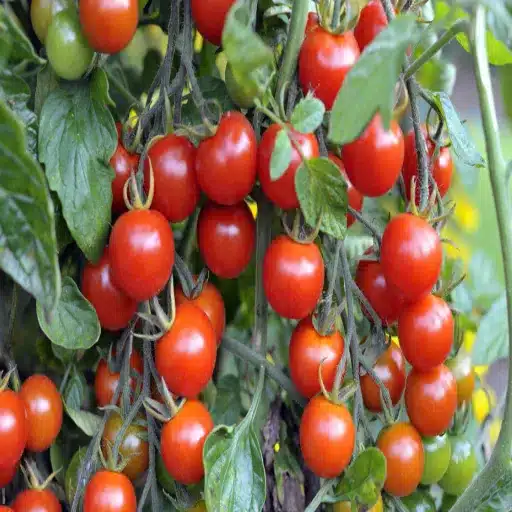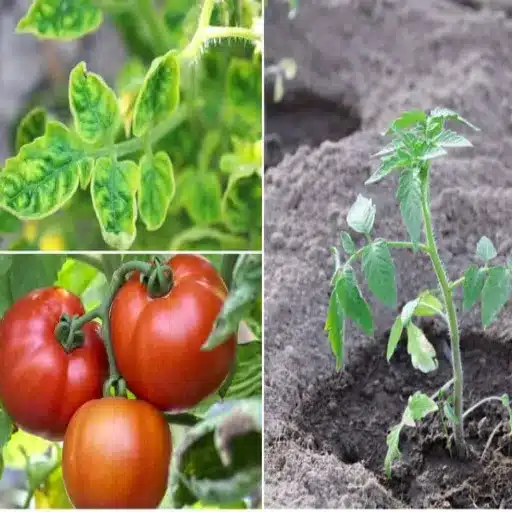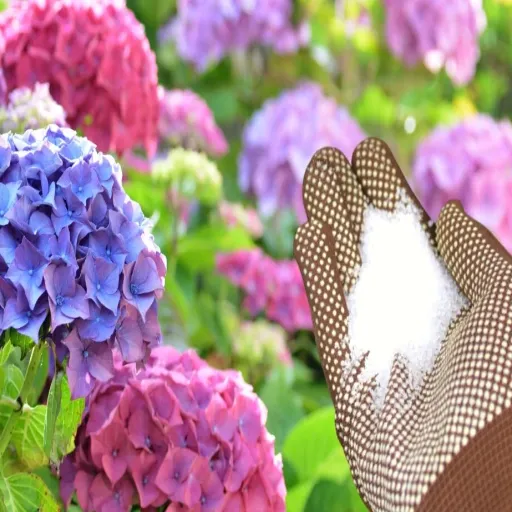Growing cannabis plants successfully requires a careful balance of nutrients, environmental factors, and cultivation techniques. Among the many products considered by growers to enhance plant health, Epsom salt often emerges as a popular yet controversial option. While touted for its ability to address magnesium and sulfur deficiencies—two critical nutrients for cannabis growth—improper use of Epsom salt can potentially harm your plants. This article dives into the science behind Epsom salt, its benefits and risks, and how to use it correctly to ensure thriving, healthy cannabis plants. Whether you’re a novice grower or a seasoned cultivator, understanding the role of Epsom salt in plant care is crucial to optimizing yield and avoiding costly mistakes.
Can Too Much Epsom Salt Kill Marijuana Plants?
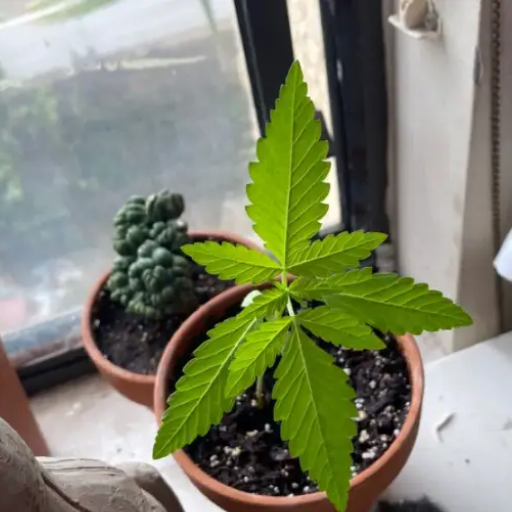
Signs of Epsom Salt Overdose in Cannabis Plants
The excessive application of Epsom salt can result in observable symptoms that inhibit the growth and health of marijuana plants. Magnesium poisoning is regarded as the most prominent sign, which hampers the plant’s ability to absorb calcium and potassium. This imbalance is often seen as a burnt tip of dark green foliage signaling nutrient lockout. Moreover, plants are likely to experience stunted growth or poor flowering due to an overabundance of nutrients.
Another symptom that can be attributed to the use of Epsom salt is the increase in salt concentration in the growing medium. Such accumulation tends to change the pH of the soil, which makes it difficult for roots to access nutrients effectively. A sign of salt accumulation is crusting around the surface of the medium in a white color. If these conditions are not treated in time, they may result in severe stress to the plant and reduced yield.
Clearing these hurdles requires that the amount of Epsom salt given, nutrient levels, and the pH are regularly tested on topped topsoil to prevent the occurrence of the soil becoming overly salty. By taking a proactive approach and understanding these signs along with corrective actions, salt buildup can be avoided, ensuring proper structure and health of the plant.
The Right Amount of Epsom Salt to Use for Cannabis
Figuring out the right dosage of Epsom salt for cannabis gardening requires special attention to the growth stage of the plant, the surrounding soil conditions, and any oversights concerning nutrients. Typical recommendations suggest steeping Epsom salt at a ratio of 1 to 2 teaspoons per gallon of water for use as either a foliar spray or soil drench. In the vegetative stage, these smaller amounts (approx 1 teaspoon per gallon) are considered adequate, while during the flowering stage, cannabis plants tend to do better with a bit higher concentration of granules (nearer to 2 teaspoons per gallon).
For those utilizing a hydroponic system or other soilless mixtures, Epsom salts should be added to the nutrient solution in controlled amounts, usually around 1 gram per gallon of water, depending on the concentration of magnesium and sulfur. It is crucial to test the nutrient solution regularly to maintain a healthy balance without crossing the threshold into toxicity or the dreaded nutrient lockout.
Above all, one must grasp that cannabis plants have semi-relatively ideal ratios of magnesium and sulfur. Epsom salt, containing magnesium sulfate, raises the possibility of salt overaccumulation, which can adversely affect pH balance and nutrient absorption. To enhance outcomes, growers should evaluate health and modify their approach for better analysis of plants and soil tests alongside plant health in conjunction with their reliable pH and EC meters. Controlled Epsom salt applications regarding a plant’s requirements will help obtain greater foliar biomass and overall plant yield.
How Nutrient Burn from Excess Epsom Salt Damages Plants
Overuse of Epsom salt can result in burning a plant’s nutrients when too much magnesium and sulfur are placed onto a soil because there is no equilibrium within the nutrient solution, and osmotic stress takes place. A plant lacking the capacity to withstand the concentration of salts will have roots that, in normal situations, would absorb water but, due to a lack of osmotic pressure being the environment, waste away instead. This root dehydration scenario can bring about the curling of trifoliate leaves with tips that scorch and turn red or brown, a signature of nutrient toxicity, which is quite widespread.
Magnesium in excess can block the mobility of other helpful amines, calcium, and potassium, which are essential for cell walls and enzyme reactions. Substantial amounts of sulfur are important for making roots and stems, but become dangerously toxic if not managed, distributing structural damage, which adds to the problem, is sulfonated or container hydroponics, situated where the water salt level can be removed faster for a short period.
To avoid nutrient burn from Epsom salt, growers should employ accurate scheduling of Epsom salt application based on soil analysis. Soil and solution testing for electrical conductivity (EC) and magnesium concentration are vital for his understanding of the saturation level. Advanced methods enable one to take real-time observations of the nutrient status of several tissues, thus allowing corrective actions to remove any potential toxicities that may arise during the growing process. With careful control and monitoring, cultivators can use Epsom salt while minimizing negative outcomes and maximizing positive ones.
How to Properly Apply Epsom Salt to Cannabis Plants
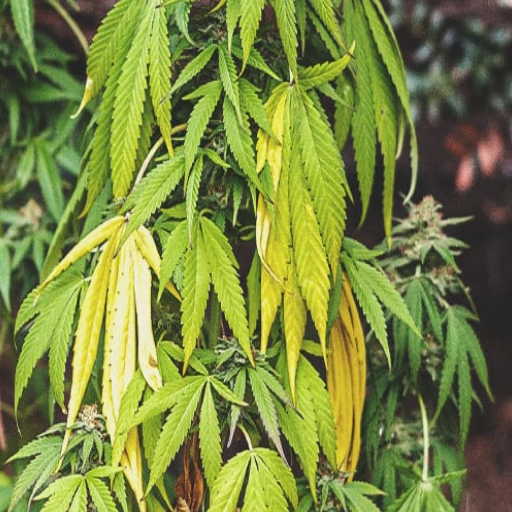
Foliar Spray Method: Using Epsom Salt as a Nutrient Spray
Foliage application of Epsom salt is clinically important for solving magnesium and sulfur deficiencies in cannabis plants in a short amount of time. This technique entails dissolving magnesium sulfate in water and applying it directly to the leaves. It is best to use a dosage of 1 to 2 teaspoons of Epsom salt per gallon of water; it provides enough nutrients while not damaging the plant tissues.
One thing to remember while using the foliar spray method is to not apply the solution at any point of the day and strictly limit themselves to the early morning or late evening. These give the plant the best chance of absorbing nutrients while reducing evaporation due to sunlight or high temperatures. Spraying during these times also reduces the likelihood of foliage burns, a damaging condition caused by water droplets magnifying due to strong illumination.
Research highlights the significance of maintaining the spray solution pH level as it affects the nutrient uptake. Foliar feeding is most effective with a pH between 5.5 and 6.5. Adjusting pH levels before applying the solution can optimize nutrient absorption through the stomata. Moreover, studies indicate that utilizing distilled or purified water for the spray preparation minimizes the minerals and particulates that would otherwise compromise the intended outcome of the solution.
Keeping track of visible signs of improvement is also important to avoid over-applying nutrients. Although exceedingly efficient for immediate nutrient correction, excessive foliar feeding or high-concentration solutions can cause unintended problems such as nutrient toxicity or osmotic imbalance.
Adding Epsom Salt to the Soil: Proper Techniques
Like any other nutrient application procedure, applying Epsom salt (magnesium sulfate) to soil requires precision and procedure compliance to avoid creating a soil imbalance. Due to Epsom salt’s capability to supplement magnesium in deficient soils, it is rated highly in the agricultural sector. Epsom salt has another benefit in that it provides sulfur, a nutrient required for plants to thrive. However, when it comes to magnesium supplementation, Epsom salt requires close attention when it comes to the time and concentration applied.
Epsom salt should be used only after soil tests. It should not be applied blindly. Suggested amounts range from 1 to 2 tablespoons/ 1 gallon of water, depending on the concentration needed. For top dressing, small amounts should be applied to avoid smothering the soil, while for liquid applications, aim to be at the lower end of the provided concentrations. Granulated methods recommend applying the powdered forms to the surface around the plant before incorporating them lightly into the top layer of soil, making them more available to the roots.
In a garden-wide application or large-scale gardens, applying Epsom salt as part of an amendment program will work best as opposed to using it as a standalone solution. Moreover, using it along with organic matter like compost may improve its stabilizing potential whereby it makes the release of nutrients gradual over time. With periodic soil testing and plant response tracking, they can avoid the issues that stem from over-application, secondary nutrient imbalances, or increased soil salinity.
Best Timing for Epsom Salt Application in Cannabis Growth Cycle
Epsom salt has magnesium and sulfur, and it is useful in the cultivation of cannabis through assisting in the absorption of nutrients, the production of chlorophyll, and the growth of the plant as a whole. Nevertheless, it can only be applied at particular times during the stages of growth to avoid the increased risks of nutrient toxicity.
When cannabis plants enter their vegetative stage, they grow quickly and require copious amounts of magnesium and other essential nutrients. Epsom salt will dilate into a solution and increases the likelihood of attaining strong foliage stimulating the plant for photosynthetic activities. During early stages of vegetative growth, foliar sprays are suggested due to higher absorption ratio as compared to soil uptake.
Magnesium and sulfur are still essential in lesser amounts relative to the vegetative stage during the flowering phase. To these two nutrients, Epsom salt can be added to irrigation cycles to mitigate deficiencies that may hinder bud formation and yield volume. Applications should be controlled to prevent unnecessary buildup of these nutrients. Ceasing applications of these nutrients towards the end of flowering is wise to preserve the taste and quality of the final product. Consistent testing of soil or hydroponic solution through the growth cycle aids in maintaining proper nutrient balance throughout the various growth stages of the plants.
Benefits of Using Epsom Salt for Cannabis Growth
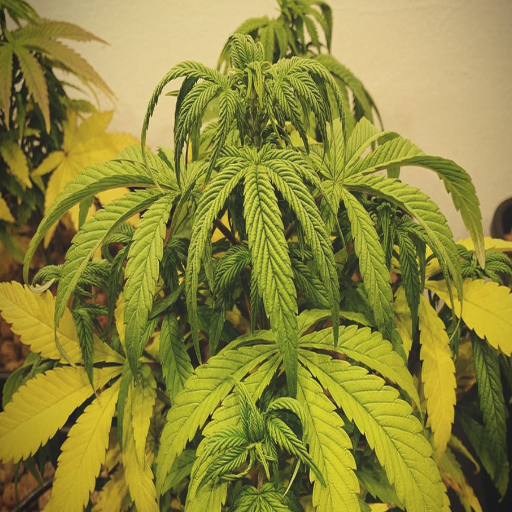
Treating Magnesium Deficiency in Cannabis Plants
Like other plants, cannabis requires magnesium in large quantities for proper health. In the case of cannabis plants, magnesium is crucial for photosynthesis since it enables the formation of chlorophyll. Lack of magnesium severely hampers the growth of the plant. This could lead to conditions such as interveinal chlorosis, which is the most common for leaf veins turning dark green while the areas between them becomes a lighter shade of yellow.
Especially in the case where the nutrient solution has been tested for magnesium content. For those who are familiar with Epsom salt, best believe, it can work wonders for your magnesium deficiency. Magnesium sulfate is its chemical name, and it is a more than suitable candidate when applied either as a soil amendment or foliar spray. Using Epsom salt as a foliar spray tends to show the best results, too. You can do this by dissolving a tablespoon of Epsom in a gallon of water and then spraying the leaves, along with the side that faces away from the sun. But that isn’t all, in terms of soil or hydroponic reservoir,s don’t forget to use one teaspoon per gallon of water, which would, in turn, help prevent over-fertilization.
Equally important are preventive measures like keeping a proper dietary regimen and controlling the specific pH value of the soil, since a pH 5.8 or below and 7.0 or above is too acidic or basic for magnesium to be available. Regular checks and corrections within the limits of 6.0 and 7.0 for soil and 5.5 and 6.5 for hydroponics help ensure that there is enough magnesium. Meeting these measures can eliminate deficiencies and help the plant grow properly, maximizing yields of good-quality cannabis.
How Epsom Salt Enhances Photosynthesis and Chlorophyll Production
Epsom salt adds magnesium when dissolved in water which helps plants gain metabolic efficiency. Its sulfur compounds improve amino acids and enzymes formation that contributes to the growth of the plant.
Chlorophyll, a pigment that allows plants to capture energy during photosynthesis, requires magnesium as an integral part of its structure. Chlorophyll captures light energy to synthesize food for itself and the entire plant. Photosynthesis is one of the most critical processes for plants, which epsom helps enhance significantly.
Foliar spraying or soil amendment of mgso4 provides an immediate bioavailable source of magnesium to the leaves and roots of the plant, drastically improving the output through multiple cell energy systems like motors and engines of the chloroplast organelles to transmute light energy into fuel.
Research suggests that for crops such as tomatoes and peppers, the application of magnesium sulfate may enhance the rate of photosynthesis in magnesium-deficient plants by as much as 30%. Though specific amounts differ depending on plant type and growing conditions, a typical foliar application calls for dissolving one tablespoon of Epsom salt in a gallon of water, with bi-weekly applications for best results. This form of magnesium helps with chlorophyll synthesis, captures more energy, and enhances the health of the agronomic species.
Impact on Bud Development and Overall Plant Health
Applying Epsom salt to the soil seems to greatly improve budding and plant health, and this is because Epsom salt has magnesium, a key component in chlorophyll metabolization and enzyme-catalyzing activities. When the buds appear, plants go through a nutrient demand for magnesium and sulfur because they need it for cell growth and energy shift for cellular respiration processes. Magnesium also serves other purposes, such as spacing the light-absorbing parts in cells known as chloroplasts during photosynthesis. Chlorophyll, accompanied by sulfur, further assists with forming structural vitamins and other important materials that aid cellular growth, helping cells produce amino acids.
Chronic magnesium sulfate supplementation to perennial plants has been shown to enhance budding density as well as produce larger and healthier flowers compared with plants without such supplementation. Also, the magnesium deficiency during critical stages of growth often leads to stunted Brix levels along with pale or underdeveloped buds, indicating the need to ensure the balanced ratio of nutrients. Field studies indicate that Epsom salt foliar applications, beyond the supplementation of identified deficiencies, improve the mobility of the nutrients within the plant and directly affect the plant’s reproductive success, along with the consistency of crop yields.
Integrating Epsom salt’s features with the regular practices of soil treatment ensures a sustained enhancement in the factor of horticultural plants such as leaves, roots, and even the plants’ innate resistance mechanisms to abiotic stresses. This characterizes Epsom salt as a versatile supplement for direct and long-term agricultural approaches.
When Should You Avoid Using Epsom Salt on Cannabis?

Situations Where Epsom Salt May Harm Cannabis Plants
Epsom salt, when used properly, can unlock new levels of prosperity for cannabis farming, however, it must be done with caution, as the consequences of epsom salt can be detrimental as well. The issues mentioned below showcase the scenarios where using epsom salt won’t prove useful:
- Too Much Magnesium and Sulfate: Using epsom salt without monitoring its application will lead to an abundance of magnesium, which, in turn, will harm the plants because their roots will struggle to absorb enough calcium and potassium. These nutrients are vital for the growth of plants. A plant compromised by a lack of its nutrients becomes incapable of absorbing bolstering aid from magnesium. Damaging too many sulfates also alters a soil’s pH and lowers the level of microorganisms that greatly affect the abundance of nutrients available.
- Sandy Soils: Xerophytic soils needing no augmentation can also reach deadly levels of nutrient concentration. Too much chloride may appear in leaves, and damaged growth might be witnessed. Epsom salt must be used with extreme caution in this case, as high magnesium and iron chloride are dangerous. It is always better to analyze the soil first for magnesium content before using epsom salt.
- Hydroponic systems with nutrient-balanced precursors: Hydroponic setups need to plan ahead of time in terms of providing precise amounts of macronutrients and micronutrients to permanently planted plants. Magnesium and sulfate should not be added to these because they will throw the nutrient balance off resulting in too much or too little. This is what will lead to nutrient antagonism or toxic build-up.
- Waterlogged or Poorly Drained Soil: Adding Epsom salt to waterlogged or compacted soil increases the likelihood of salt buildups. Poor drainage inhibits the leaching of excess salts, which increases salinity levels in soil, resulting in root dehydration or nutrient lockout, which is detrimental for cannabis plants.
- Over-reliance on Epsom Salt for Deficiency Correction: While Epsom salt is a useful magnesium deficiency corrector, it should not be the sole corrective measure. Another underlying issue, such as improper pH and soil structure, nutrient imbalance, or deficient Canadian Cannabis drone, may persist. Outward solutions will be rooted in sustainable cannabis cultivation. Relying on an excess of Epsom salt will only exacerbate problems.
Addressing these scenarios helps cultivators make educated decisions, ensuring Epsom salt is utilized strategically and promotes plant health without damaging the growing environment.
Alternative Solutions for Nutrient Deficiencies
Cannabis care involves understanding agriculture’s more mechanical aspects, alongside biotechnical farming, eco-friendly methods, and careful diagnostics, because each nutrient deficiency requires complete understanding and adjustment. Nutrients, pH level, and microbials present in the soil must be checked, and soil examination must be applied to accurately measure the available nutrients. Also, the addition of decomposed manure aids with nutrients. The addition of well-decomposed manure or compost improves the soil structure and slowly releases chelated nutrients.
With every time fuel generation systems become more advanced, the precision with which nutrients are supplied is tailored according to specific phases of growth. Because of real-time observation, overapplication and nutrient runoff are completely avoidable, further enabling real-time monitoring. The use of additional beneficial crop rotation greatly allows for easier sustaining and self-building, replenishing soil biosystems, and motivating inter-plants for soil nutrient replenishment.
The nutrient ratios to be offered should be complete with chelated micronutrients. Also, balanced solutions must be maintained to completely siphon off carefree absorption hurdles that plants face during growth. Controlling TDS and electrical conductivity will ultimately help assure the cleanness of the nutrient levels. Also, the addition of helpful mycorrhizal fungi or other beneficial microbes aids with the absorption of phosphorus and other nutrients, while improving the plant’s structure.
These techniques need to be combined with observation and data usage to notice nutrient lack or curb excess of nutrients in the crops, creating balance, making crop productivity stable while being eco-friendly. Sustaining productivity along with eco-friendliness poses a balance, benefiting overall cultivation goals.
Epsom Salt Solutions for Different Stages of Cannabis Growth
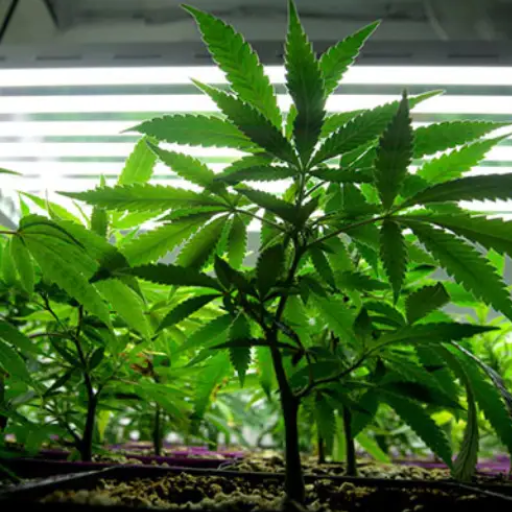
Using Epsom Salt for Cannabis Seedlings and Young Plants
Nutrients in the right ratio are crucial for the healthy root system and vegetative development of seedlings and young plants. Epsom salt or magnesium sulfate (MgSO₄) has ample magnesium and sulfur in the right proportions, which makes it easy to achieve optimal growth during critical development stages. Magnesium aids in photosynthesis and is a critical part of chlorophyll, while sulfur helps in forming vital amino acids and enzymes required by the rind or its organ systems.
In the case of sensitive cannabis seedlings, Epsom salt should be applied in a diluted solution to prevent damage to the fragile roots. A popular recommendation is 1 teaspoon of Epsom salt per 1 gallon of water. Depending on the conditions, the solution can be applied as a light tilt of the soil or sprayed on the leaves. Chlorosis is not easily reversible on young foliage; lack of magnesium, which manifests as interveinal chlorosis in younger leaves, can be remedied through foliar application.
Emerging plants about to enter the vegetative stage can benefit from increased Epsom salt applications of roughly one to two teaspoons per gallon of water, as the salt aids them in meeting their nutrient needs. Ensuring a consistent nutrient balance is important, along with pH, conductivity, and magnesium meters. Monitoring devices should be used to maintain magnesium levels to prevent the destruction of Epsom salts, causing nutrient lockout imbalances, especially with calcium and potassium. Because of that, adjustments have to be calculated, taking into account the health metrics of the plants.
Epsom Salt Applications During the Vegetative Stage
Epsom salt acts as an important source of magnesium (Mg) and sulfur (S) during the vegetative stage, as it aids in the development of the respective plant. Magnesium is needed for plants as it is part of the chlorophyll and enables photosynthesis to occur, while Sulfur helps in the process of protein synthesis and enzyme function. The application rate usually lies between 1 to 2 teaspoons of Epsom salt (5-10 grams) per gallon of water, either as a foliar spray or added to irrigation. However, actual dosage may need to be recalibrated based on the results from soil tests and considering the crop’s magnesium uptake needs.
For maximum effectiveness, the foliar spray should be done early in the morning or in the late afternoon to enhance absorption and lessen evaporation. Elders suggest soil application can be added to the soaking sessions of watering of the plant so there is a steady supply of nutrients in the hydroponic or the traditional soil systems.
It is extremely important to pair Epsom salt with an Epsom salt and nutrient monitoring plan. Specialized equipment like soil magnesium testing kits and conductivity meters measure nutrient concentration, allowing for better nutrition management to prevent deficiency or toxicity and imbalances. According to metrics adjusted with Epsom salt supplementation, optimum stem growth, greenery, and enhanced enzyme functions, which aid active development, marked during the vegetative stage, are achieved.
Supporting Flowering with Proper Epsom Salt Usage
How you use Epsom salt during the flowering phase of a plant can impact bud development and floral quality. As magnesium is relevant in life processes which are heavily reliant on energy such as photosynthesis, during this phase, it is necessary to incorporate it into the strategy. Sulfur is also critical in cell development of the flowers since it is important in the formation of amino acids and proteins.
Efforts in optimizing outcomes should involve the addition of Epsom salt into the plant’s nutrient solution, either in the form of 1-2 teaspoons of Epsom Salt powder for every gallon of water, taking care to mix it based on the specific needs of the plant species. Periodically, plant tissue analysis as well as soil testing for magnesium levels are the best techniques to accurately gauge monitoring supplementation. With this technique, it is easy to avoid conditions like magnesium lockout, which is common due to excess calcium or potassium during flowering at the nutrient uptake phase.
Elevated flowering stage corners where the soil is deemed incapable of uptake can benefit from blanket application of the inflorescence with hypo-concentrated Epsom salt solution, targeting faster uptake of magnesium. When doing this, a cold morning or a hot late evening is the best time to do the application of the solution to avoid leaf scorch by aiming for widespread application across the top of the plant without oversaturation.
Using Epsom salt during the blooming stage of an Aromatic species plant helps it increase production and improves yield quality. Implementing Epsom salt usage as the plant begins to bud will stimulate active blossom formation.
References
Frequently Asked Questions (FAQs)
Q: What are the benefits of Epsom salt for cannabis plants?
A: Epsom salt is a natural source of magnesium and sulfur, which are essential nutrients for cannabis plants. The benefits of Epsom salt include preventing and correcting magnesium deficiencies, improving nutrient uptake, enhancing chlorophyll production, strengthening cell walls, and promoting bushier plants with higher yields. Magnesium in Epsom salt helps with photosynthesis and protein production, while sulfur aids in the production of vitamins, amino acids, and enzymes. Using Epsom salt is an excellent way to ensure the healthy growth of your cannabis plants without harsh chemicals.
Q: How does the magnesium in Epsom salt help cannabis plants?
A: Magnesium is a critical component for cannabis plants to be healthy and productive. Magnesium in Epsom salt plays a central role in chlorophyll production, which is essential for photosynthesis. It also helps activate specific enzyme systems, aids in the uptake of other nutrients they need, like nitrogen and phosphorus, and contributes to protein synthesis. Magnesium is also crucial for cell membrane stabilization and proper development of the cannabis plant’s root system. When cannabis plants lack sufficient magnesium, they may exhibit yellowing leaves (chlorosis) between the veins, which can severely impact overall plant health and yield.
Q: What role does sulfur play in cannabis plant development?
A: Sulfur is the second major element in Epsom salt and plays several vital roles in cannabis plant development. It’s essential for protein synthesis, chlorophyll formation, and oil production in cannabis plants. Sulfur helps the plant develop resistance to disease and environmental stress while also being a key component in the production of cannabinoids and terpenes that determine potency and flavor profiles. Additionally, sulfur works synergistically with nitrogen to create amino acids and is crucial for enzyme activation. A sulfur deficiency can lead to stunted growth, pale yellow leaves, and reduced bud development in your cannabis plants.
Q: Can I apply Epsom salt directly to my cannabis plants?
A: You can apply Epsom salt directly to cannabis plants, but it should be done with caution and proper dilution. The ideal amount of Epsom salt for most applications is 1 tablespoon per gallon of water. Never apply Epsom salt directly in its dry form, as this can cause nutrient burn. You can use it as a foliar spray (applying to leaves) for faster absorption or add it to your regular watering routine. For foliar application, use a more diluted solution (1 teaspoon per gallon) and spray when the lights are off to prevent leaf burn. Always start with a lower concentration and monitor your plants’ response before increasing the dosage.
Q: Can using too much Epsom salt kill your cannabis plants?
A: Yes, excessive use of Epsom salt can potentially kill your cannabis plants. While Epsom salt is beneficial in the right amounts, overdosing can lead to magnesium toxicity, nutrient lockout, and salt buildup in the growing medium. This can cause symptoms like leaf burn, wilting, and eventually plant death. It’s important to remember that Epsom salt is not a complete fertilizer but a supplement for specific deficiencies. Always follow recommended dosages (typically 1 tablespoon per gallon of water for soil applications) and use it only when necessary. Regular soil testing can help determine if your plants need additional magnesium and sulfur before applying Epsom salt.
Q: When is the best time to use Epsom salt for marijuana plants during their growth cycle?
A: Epsom salt for marijuana can be beneficial throughout different growth stages, but timing is important for maximum effectiveness. During the vegetative (veg) stage, when plants are establishing their structure and leaf development, a light application every 2-3 weeks can promote bushier growth. During the early to mid-flowering stage, Epsom salt can help support bud development and prevent deficiencies when plants demand more nutrients. However, it’s best to reduce or eliminate Epsom salt applications during the late flowering stage and certainly during the final flush period (2 weeks before harvest). Mother plants kept for cloning can also benefit from occasional Epsom salt treatments to maintain vigor over their extended lifespan.
Q: Can Epsom salt help with cannabis seed germination?
A: Epsom salt is not typically recommended for direct use with cannabis seeds during germination. The delicate emerging seedlings can be sensitive to any additional minerals. However, once your cannabis seeds have sprouted and developed their first true set of leaves, a very dilute Epsom salt solution (¼ teaspoon per gallon) can be introduced to provide initial magnesium and sulfur. A better approach is to ensure your starting medium contains appropriate nutrient levels or to wait until plants are established before supplementing with Epsom salt. If you’re growing in coco coir, which tends to be deficient in magnesium, earlier supplementation might be beneficial.
Q: Is there a difference between Epsom salt for cannabis and regular bath salts?
A: Yes, there’s a significant difference between agricultural Epsom salt for cannabis and scented bath salts. Pure Epsom salt is magnesium sulfate (MgSO₄·7H₂O) without additives, making it safe for plants. Bath salts often contain perfumes, colors, essential oils, and other additives that can harm or kill cannabis plants. When purchasing Epsom salt for horticultural use, always choose pure, unscented Epsom salt, preferably labeled for agricultural or garden use.
Q: How do I recognize magnesium deficiency in my cannabis plants?
A: Recognizing magnesium deficiency in cannabis plants is extremely important for timely treatment. The primary symptom is interveinal chlorosis, where leaves yellow between the veins while the veins remain green, typically starting with older, lower leaves. As the deficiency progresses, the yellowing moves upward, leaf margins may turn brown, and leaves might curl upward. In severe cases, leaves develop rust-colored spots, become brittle, and eventually fall off. This deficiency often appears during the flowering stage when plants have higher magnesium demands. If you notice these symptoms, a foliar application of Epsom salt solution (1 teaspoon per gallon of water) can provide quick relief while a soil drench (1 tablespoon per gallon) offers longer-term correction.
Q: Can Epsom salt replace regular cannabis fertilizers?
A: No, Epsom salt cannot replace regular cannabis fertilizers. While Epsom salt is an excellent addition to your nutrient regimen, it only provides magnesium and sulfur. Cannabis plants require a complete spectrum of macro and micronutrients, including nitrogen, phosphorus, potassium, calcium, iron, zinc, and many others, to ensure the best quality plants. Epsom salt should be used as a supplement to address specific deficiencies or as part of a comprehensive feeding program. For optimal results, use a high-quality cannabis-specific nutrient line as your base fertilizer and add Epsom salt when additional magnesium and sulfur are needed. Always monitor your plants closely for signs of nutrient imbalances and adjust accordingly.

